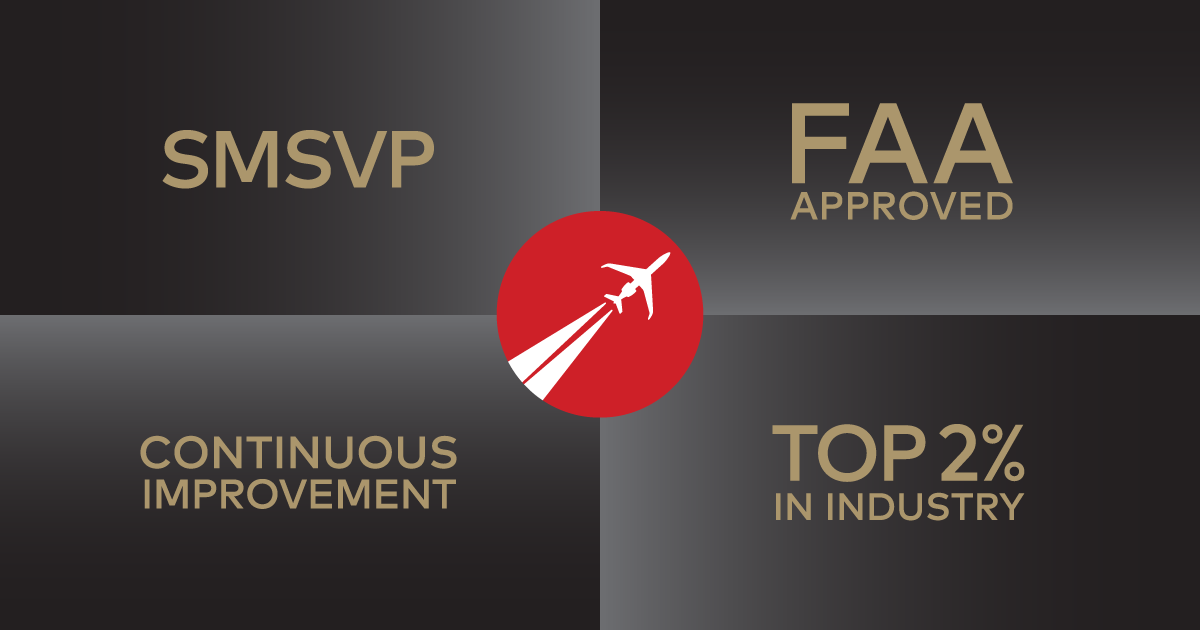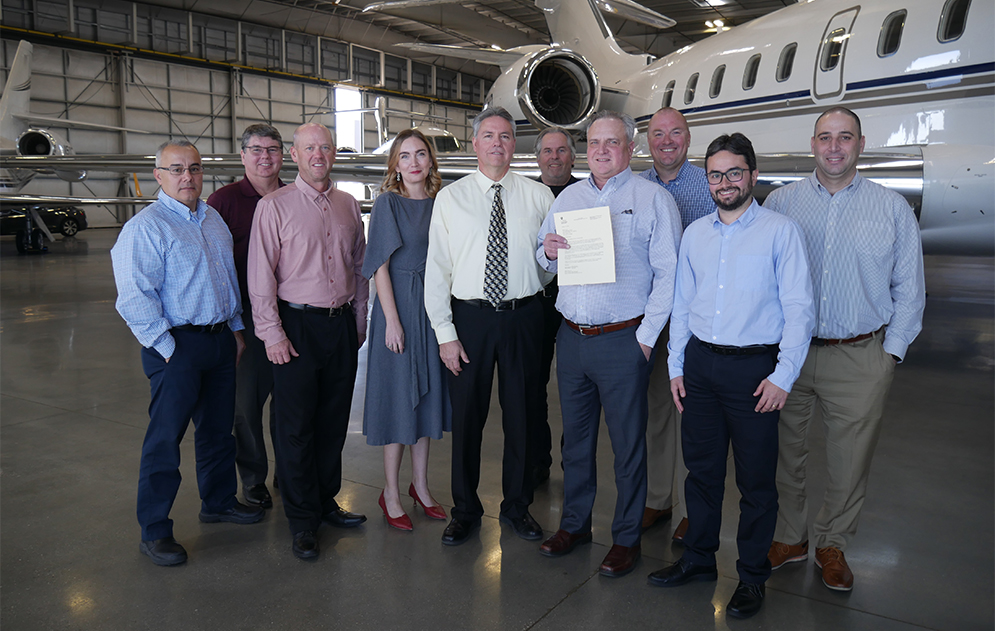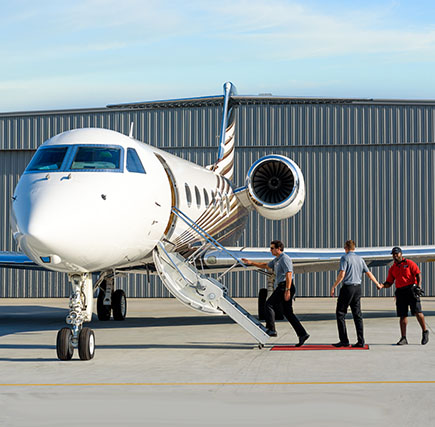
All Safety Management System Procedures Aren’t the Same – Here’s the Proof in Private Aviation
Private aircraft safety doesn’t start with a pilot’s checklist. It’s not exclusive to crew reviewing procedures with passengers preflight. It begins behind the scenes with a company’s culture that directly influences its practices and procedures that reduce risk therefore ensuring the safest operations possible – one recognized in the top 2% industrywide.
As a passenger or aircraft owner, how can you tell if your charter or private aircraft operator prioritizes safety? Ask them to prove it by sharing information about their Safety Management System or SMS and how it is used in their day-to-day routines. This may sound intimidating, but you will quickly get a good feel for how important their SMS system is by how they talk about it.
A Safety Management System is a comprehensive organized way to proactively identify risks, take actions to mitigate them, measure for effectiveness, and start the process over again. The best operators in the world have a Safety Management System Voluntary Program (SMSVP) system in place that is recognized by the Federal Aviation Administration. Just 2% of all companies in the U.S. have received this FAA recognition and Clay Lacy Aviation is included in that elite group.
This also means that 98% of operators do not have an FAA-approved SMSVP program. Safety isn’t about a single action, it’s about fostering a culture of safety that permeates all aspects of the company. Conducting safe flights is not about a single facet of Clay Lacy Aviation’s safety operations, it’s about the entirety of the organization coming together to follow the best practices to assess and eliminate risks.
The company-wide effort is a vehicle for continuous improvement for every business practice within the company, benefitting everyone – passengers, aircraft owners, crew members and technicians. Driving changes for safety throughout the entire organization is an essential element of our culture.
Success Together
One area of SMS implementation that has been successful for Clay Lacy is looking at all of flight operations holistically, matching the commercial airline model where SMS had been previously adopted. Every one of the company’s core components – aircraft management, charter, maintenance and fixed-base operations – contribute to the success of each other, and all with safety as its highest priority.
The procedures have been formalized across departments, which means every team is assessing risks and working with each other to reduce hazards and foster company-wide contribution to success. That includes organizational structure, safety policy processes and procedures as well as the people, equipment and facilities used to accomplish our mission. Specifically examined areas included flight operations, dispatch, maintenance and inspection, cabin safety, ground handling and cargo, and training.
If a company has really done the work, they can share their plans and action. Ask them if, like Clay Lacy, their SMS goes well beyond what the FAA requires for its SMSVP standards because of the importance and benefits of having a comprehensive approach to safety operations. Having all departments following the same procedures means that clients and employees alike are assured that the company’s highest priority remains safety.
What Safety Management System Says About a Company’s Culture
A successful SMS depends on everyone acting toward the same goal: continuous improvement. In Clay Lacy, that has shown up in team members recognizing where fixes are needed and providing recommendations for solutions.
The SMS empowers everyone to find a solution rather than assess blame. In the first year of Clay Lacy’s program, there was a 117% increase in internal reports in risk recognition and solutions.
With a culture of leadership and doing the right thing on a daily basis, its team knows this work is never completed and can always be improved.
Questions to Ask Your Aircraft Management or Charter Company
Here are five questions to help determine if a company prioritizes safety:
- Has the FAA certified their SMSVP program?
- How are they complying with federal regulations for legal aircraft, legal crew and legal operations?
- How are they making risk assessments that span departments?
- What are they doing with that input and how are they implementing standard procedures?
- How are they acting proactively for issues such as pilot fatigue or safeguards for long-range travel?
Since 1968 Clay Lacy Aviation has been operating privately owned business jets to locations around the globe, operating to the highest standards. For more information about safety processes, aircraft charter, or professional aircraft management services, schedule a call with our team.


